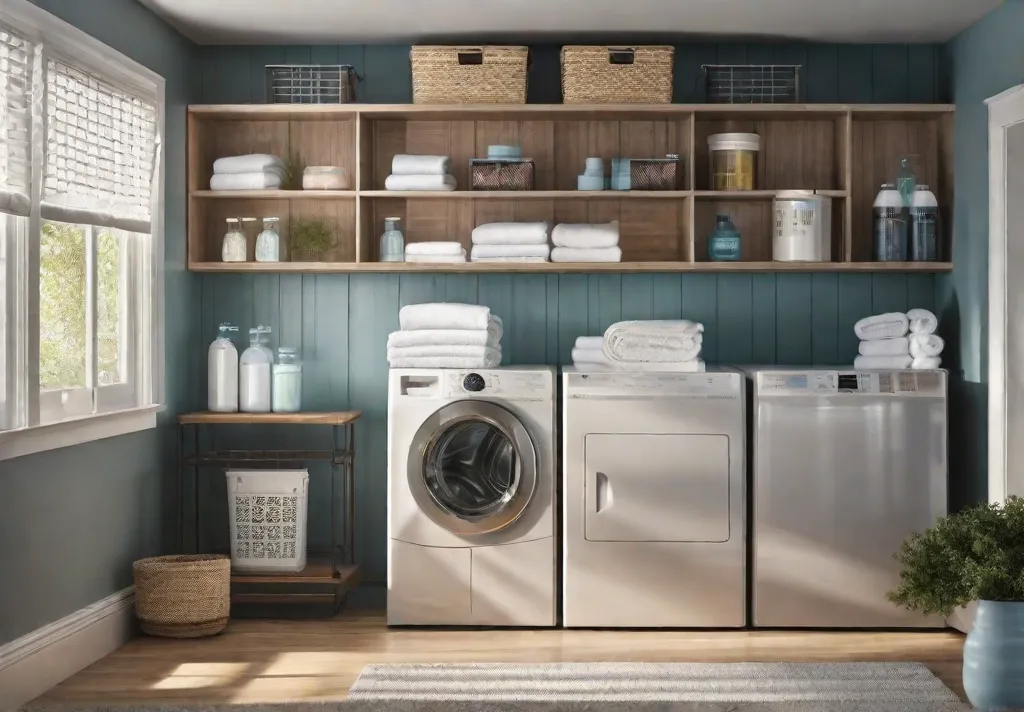Doing laundry is one of those never-ending chores that can quickly become a source of frustration. From missing socks to tangled sheets, minor missteps can turn this routine task into a daunting challenge. But fear not! You can transform your routine into a seamless, stress-free experience by identifying and addressing common laundry mistakes.
According to a survey by the American Cleaning Institute, 72% of Americans find laundry to be one of the most time-consuming household chores. Misplacing items, tangled cords, and overflowing hampers are just a few of the pain points that can add unnecessary time and frustration to laundry routines.
In this article, we’ll explore nine common laundry organization mistakes and provide practical solutions to help you create a haven of order and efficiency. By addressing these pitfalls, you can enjoy the benefits of a well-organized laundry area, saving time and reducing stress in your daily life.
Mistake #1: Overlooking Vertical Space
One of the biggest things people need to improve is their utilization of vertical space effectively. This can lead to clutter and inefficiency in even the largest laundry rooms. Fortunately, several vertical storage solutions can help you maximize your space.
For example, consider installing multi-tiered shelving units to accommodate laundry baskets, detergents, and other supplies. Hanging racks are another great option for storing clothes hangers and preventing wrinkles. Additionally, over-the-door organizers can store cleaning supplies, laundry bags, or small appliances.
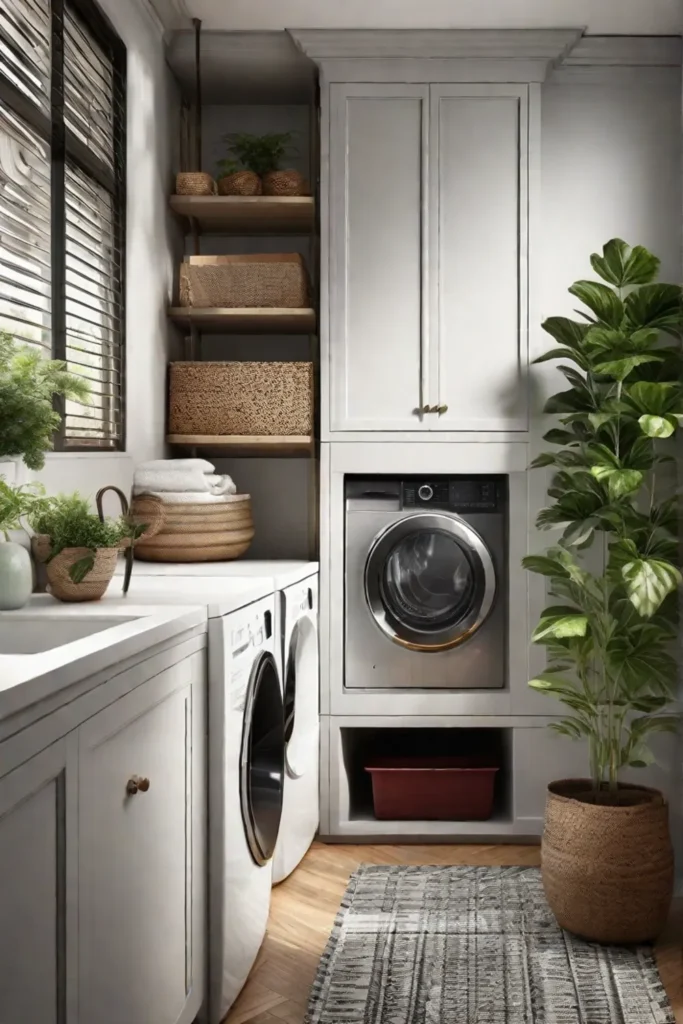
If you have a small laundry area, floating shelves or wall-mounted cabinets can create additional storage without wasting valuable floor space. Alternatively, stackable bins can be used vertically to store folded clothes, linens, or cleaning supplies.
Mistake #2: Neglecting Proper Sorting Systems
You must sort your laundry correctly to ensure the entire process is smooth. That’s why using multiple hampers for different types of laundry is essential.
Sorting laundry by color (lights, darks, whites) prevents color bleeding and fading, extending the life of your garments. Separate hampers for delicate and heavy-duty items also protect your clothes from damage caused by rough fabrics, zippers, or buttons.
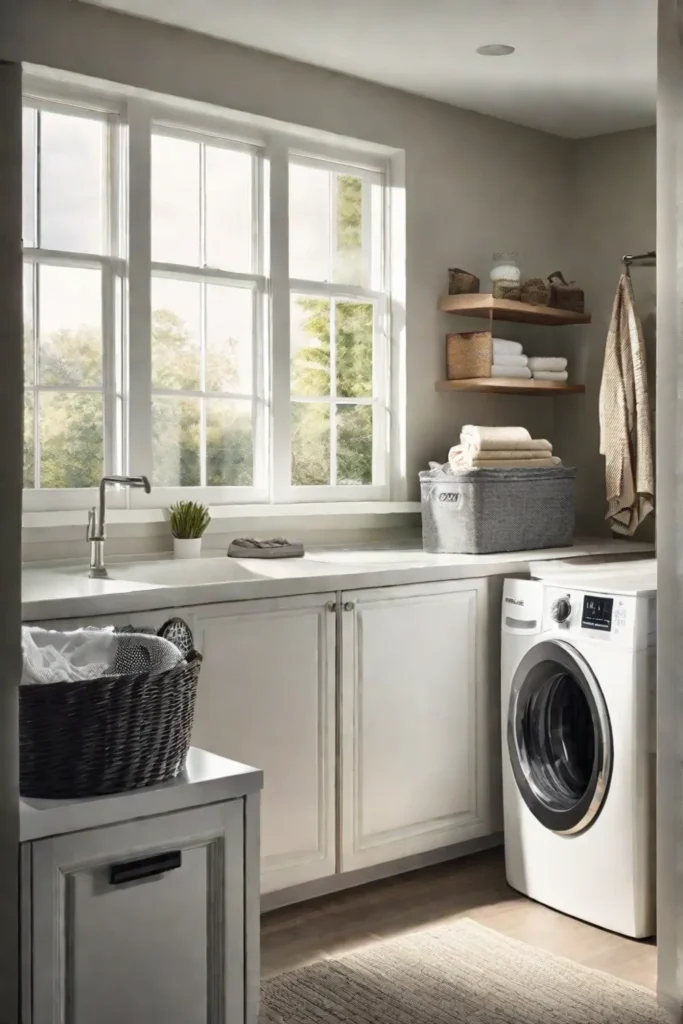
Consider using color-coded labels or assigning different colors to ea to make sorting easier hamper. Place the hampers in convenient, visible locations to encourage consistent sorting. Wall-mounted hampers are a great space-saving option, and displaying sorting guidelines near the hampers can help ensure everyone in your household follows the system.
Mistake #3: Underestimating the Importance of Accessibility
Having essential supplies and tools within easy reach can make a big difference when it comes to laundry. To ensure accessibility, arrange your laundry supplies based on frequency of use.
Store frequently used items like detergents, fabric softeners, and stain removers within arm’s reach. Items used occasionally, such as bleach or starch, can be kept in a designated cabinet or shelf nearby. Rarely used supplies, like pet stain removers or laundry sanitizers, can be stored in a less accessible location.

Use accessible storage solutions like pull-out drawers beneath the washer or dryer, over-the-door organizers, or stackable bins. Magnetic strips can also be handy for holding scissors, stain removers, or other metal items. A Lazy Susan on the counter or in a cabinet can make accessing detergents and other supplies from all angles easy.
Mistake #4: Ignoring Small Item Management
Losing track of small items like socks, delicates, and accessories can be incredibly frustrating and time-consuming. To avoid this, mesh bags should keep these items together during washing and drying.
Alternatively, dedicate small bins or baskets for each type of small item, such as socks, hair accessories, or handkerchiefs. Labeling these bins clearly can make finding what you’re looking for easy.
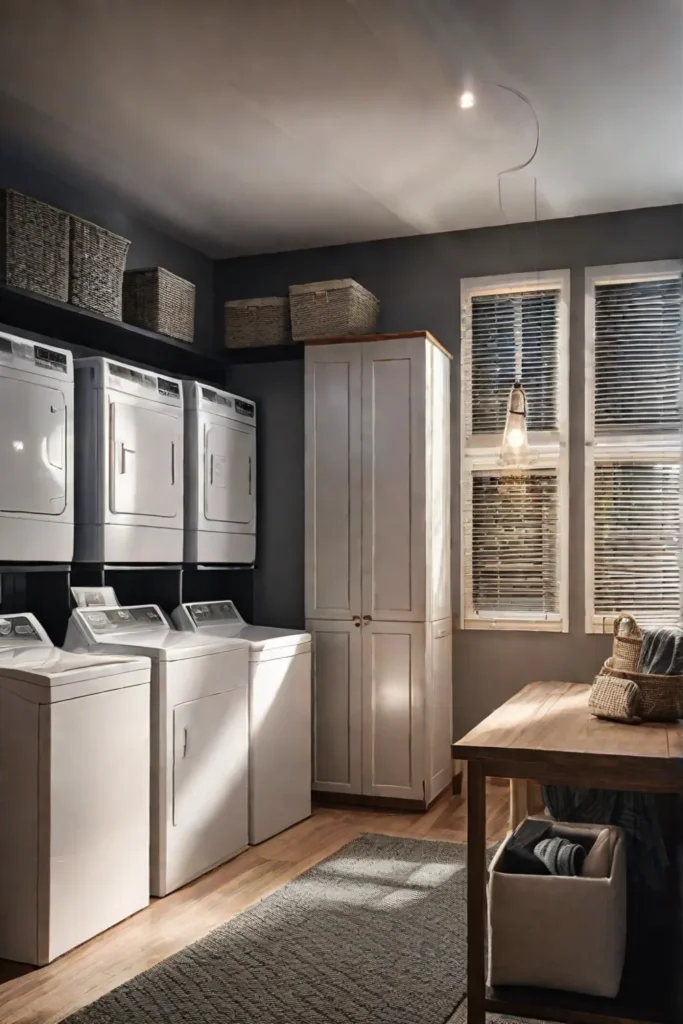
Consider dedicating a drawer in your laundry room or closet specifically for small items if space allows. Drawer organizers can help keep everything neat. Sock clips or laundry nets with zippers or drawstrings can also help keep small items from getting lost or tangled.
Mistake #5: Letting Laundry Pile Up
Procrastination is a common culprit when it comes to overwhelming laundry tasks. Establish a dedicated laundry day and stick to a regular schedule to avoid this.
Set realistic goals by breaking down large loads into smaller ones and spreading them throughout the week. Use a laundry hamper with multiple compartments to sort laundry as you go, and set reminders on your calendar or phone to keep yourself on track.
Involving family members and assigning specific laundry tasks can also help lighten the load. Creating a designated laundry space with all your supplies organized in one central location can streamline the process.

If your schedule is too busy, consider using a laundry service to relieve the burden. And remember to make laundry time more enjoyable by listening to music or podcasts while you fold and put away clothes.
Mistake #6: Failing to Maximize Storage Functionality
Not all storage solutions are created equal in terms of functionality. When choosing storage options, consider the pros and cons of each.
Open shelving is great for easy accessibility but can look cluttered and accumulate dust. Closed cabinets hide clutter but can limit accessibility and appear bulky. Drawers keep items organized and easily accessible, but it can be challenging to find specific items.
Shelving systems are customizable and can accommodate various item sizes, but they can be expensive and require assembly. Consider the room layout to maximize functionality and place storage units in easily accessible areas.
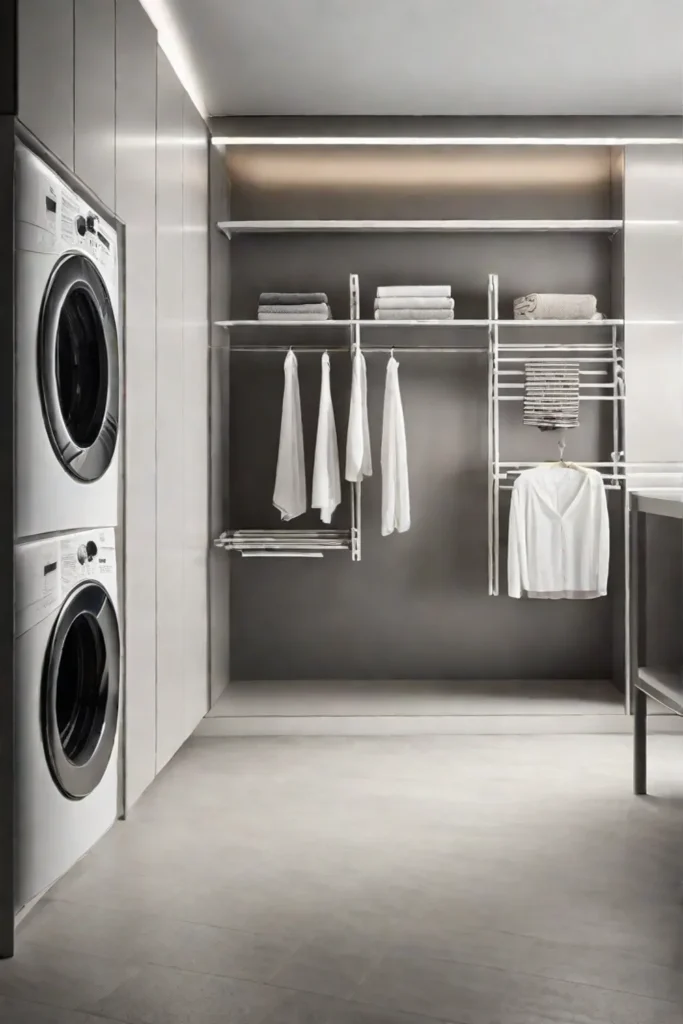
Utilize vertical space by using shelves, drawers, and hanging organizers. Group similar items together and use dividers and organizers to keep drawers and shelves neat. Customizing storage based on your specific needs and room layout can significantly affect overall functionality.
Mistake #7: Overlooking the Need for a Folding Area
A dedicated space for folding clothes can streamline the process and prevent clothes from piling up on furniture or other surfaces.
Even in small spaces, you can create a folding area by installing floating shelves or a wall-mounted table. Repurposing unused furniture like a dresser or nightstand can also be a temporary folding surface.
Combining the folding area with a laundry room or mudroom is a great way to maximize efficiency. If space is limited, consider investing in a collapsible or wheeled folding table that can be easily moved and stored away.
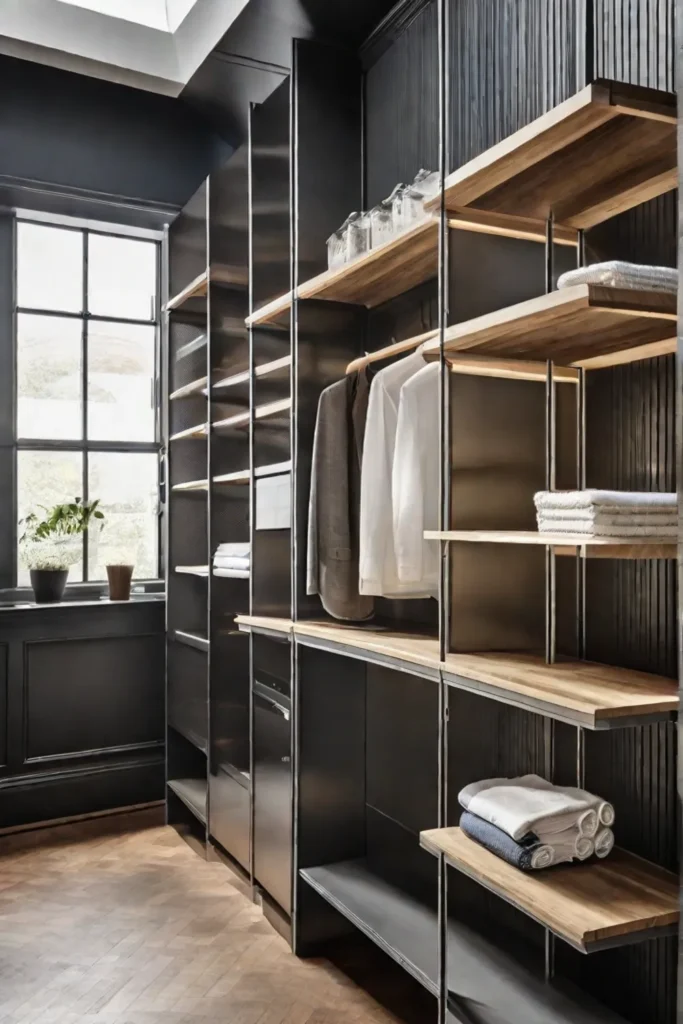
A designated folding area increases efficiency and reduces stress by providing a specific place for this task. With ample lighting and a comfortable chair, folding clothes can become an enjoyable routine.
Mistake #8: Not Utilizing the Right Organizational Tools
Using the wrong organizational tools can make your efforts futile. When choosing tools like bins, baskets, and labels, consider factors like size, shape, material, and durability.
Clear bins allow for easy visibility of contents, while stackable bins can maximize vertical space. Open-top baskets provide quick access to items, while lidded baskets conceal clutter and protect items from dust.
Use clear, waterproof labels to identify contents, and consider using a label maker for professional-looking results. Customize labels with different colors or fonts for easy categorization.
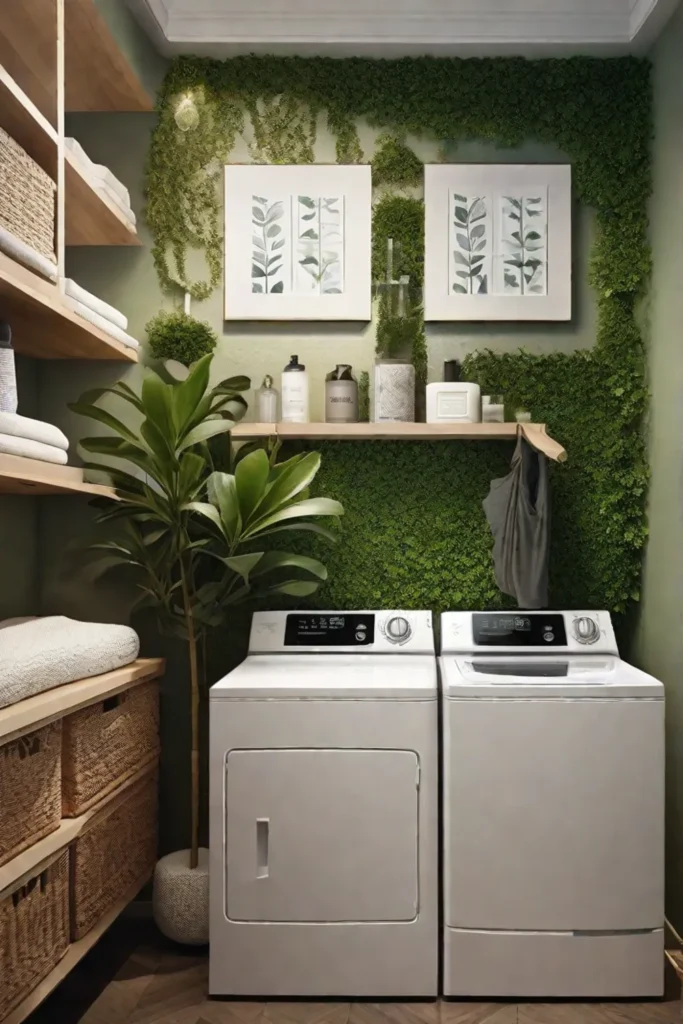
Real-life examples can help illustrate the effectiveness of these tools. For instance, one family installed a sliding basket system in their laundry room, with baskets designated for different stages of the laundry process (sorting, washing, drying).
Mistake #9: Forgetting About Aesthetics
While functionality is crucial, a visually appealing laundry space can enhance your motivation and satisfaction with the task.
Choose a cohesive color scheme with calming colors like blues, greens, or whites to create a relaxing atmosphere. Incorporate artwork, plants, or other decor to make the space more inviting.
Utilize vertical space by installing shelves or pegboards to store items vertically, saving floor space. Ensure adequate lighting to make the space both functional and visually appealing.
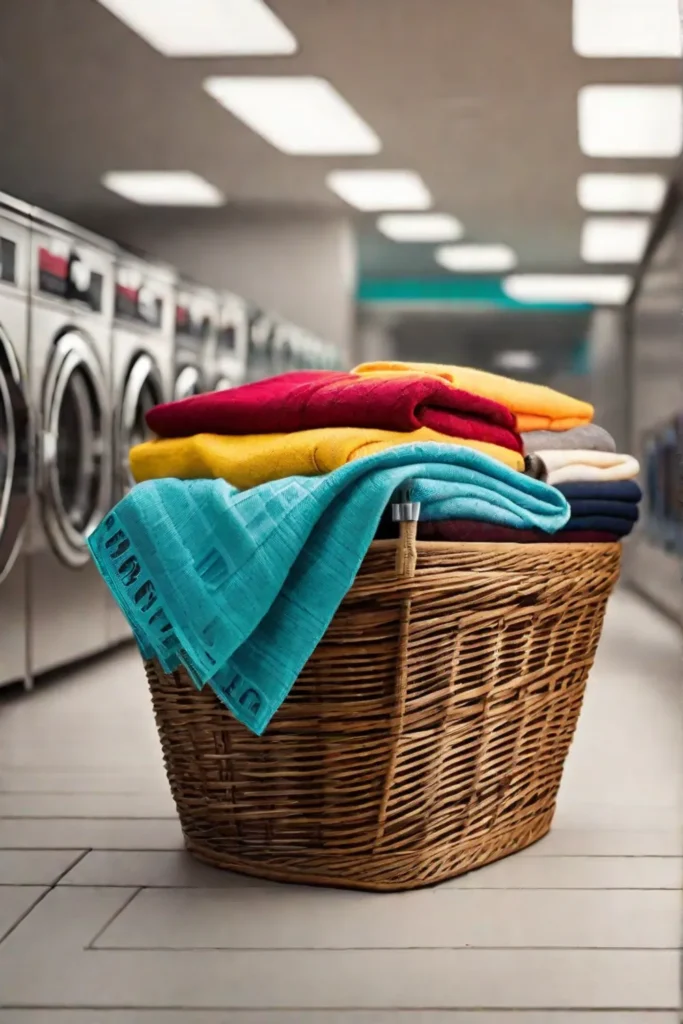
For inspiration, consider a modern farmhouse style with white cabinets, exposed beams, and a rustic rug for a cozy and functional space. Alternatively, a coastal chic theme with light blue walls, wicker baskets, and a beach-themed mirror can evoke a calming atmosphere. Or, opt for an industrial glam look with black accents, metallic fixtures, and exposed brick for a touch of sophistication.
Conclusion
Recognizing and addressing these common laundry organization mistakes can transform your laundry routine into a seamless, stress-free experience. Implement the suggested solutions to enhance your laundry organization and rethink your setup to create a more functional and efficient space.
Remember, a well-organized laundry area is an investment in time, energy, and peace of mind. It saves you frustration and contributes to a harmonious and stress-free home environment.
So, take action today and enjoy the benefits of a well-organized laundry routine. Your future self will thank you for your time and effort in creating a haven of order and efficiency.
